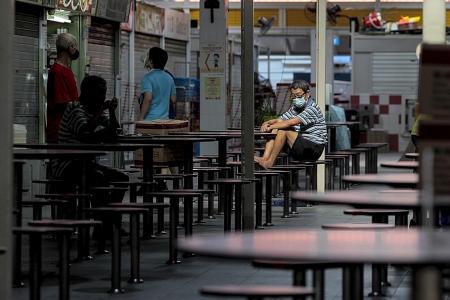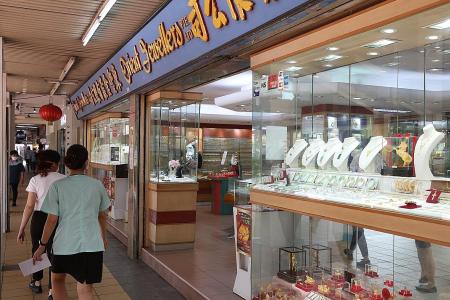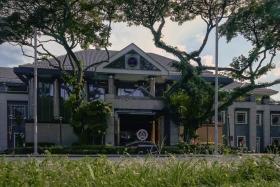Life slows in Toa Payoh as Covid-19 clusters keep crowds away
Infections linked to various locations in the area result in low footfall, hurting many businesses
The crowds are gone in Toa Payoh, which is feeling the impact of several Covid-19 clusters emerging across the neighbourhood over the past few weeks.
The Ministry of Health has identified various locations with Covid-19 cases, with the biggest of the clusters - 254 cases - at the bus interchange in Toa Payoh Central.
The other clusters are the market and hawker centre at Block 210 Toa Payoh Lorong 8, the wholesale night vegetable market in Toa Payoh Lorong 7, religious school Madrasah Irsyad Zuhri Al-Islamiah in the Toa Payoh North area and Orient Goldsmiths and Jewellers in Toa Payoh Central.
The usually busy hawker centre in Lorong 8 was mostly empty when The Straits Times visited on Monday afternoon.
Less than a quarter of the 80 stalls were in operation, with many hawkers having opted against doing business on the first day the place reopened after the premises had been closed for cleaning for three days.
The cleaning, initially scheduled for Friday, was brought forward to Sunday after Covid-19 cases were detected among stallholders and workers there.
A total of 41 cases linked to the hawker centre and market have been identified.
A hawker who declined to be identified said many of the other stall owners were reluctant to resume business as they were not expecting many customers to visit. She said she had opted to open as she still had to pay rental costs.
"Today is a really horrible day, there is no one here. During lunchtime, it is normally busy, but as you can see, it is empty now," she said, pointing to rows of unoccupied tables.
Another hawker said he would usually sell 50 bowls of fishball noodles but had less than half his usual takings that day.
Bishan-Toa Payoh GRC MP Saktiandi Supaat, who oversees the area containing both the market and hawker centre in Lorong 8 and the wholesale night vegetable market in Lorong 7, has advised residents to avoid crowds and, when it is necessary to visit shops, to make their visits brief.
Businesses around the market were similarly affected by the cluster and the closure at the weekend.
A supervisor at Kelly Jie Seafood restaurant, who wanted to be known only as Mr Jason, said that it was slim pickings for the eatery as well.
Said the 60-year-old: "We have had no customers today, just a couple of people who came by to take away their lunch."
Over at the bus interchange in Toa Payoh Central, the usual lunchtime crowd was absent.
Popular food and beverage outlets such as Toast Box, Burger King and McDonald's had about half their usual number of customers.
An employee at the Toast Box outlet, Mr Ng Yong Sun, 69, said news of the cluster at the interchange resulted in a massive drop in the number of customers.
The cluster was reported on Aug 26, when proactive testing by public transport operators picked up 36 cases linked to various bus interchanges.
According to Transport Minister S. Iswaran, less than 10 per cent of the 9,500 public bus drivers in Singapore are affected by the outbreak at the interchanges.
Even though he noted that the impact on bus services was limited, the lack of manpower has seen commuters facing longer waiting times for bus services.
"I usually wait 10 minutes for the bus, but now it has doubled to 20 minutes," said Mr Soh Hun Seng, 68.
Orient Goldsmiths and Jewellers was designated a cluster on Sept 4, and the number of cases linked to it grew to 17. The store reopened yesterday after having been closed for deep cleaning since Sept 3.
Neighbouring shops also reported a downturn in business. Many shopkeepers could be seen sitting in their stores, customers nowhere to be found.
NOT SURPRISING
For some residents, the emergence of the clusters comes as no surprise.
"The people here don't care about Covid-19, especially the old people. They just sit around and mingle, they drink and chit-chat," said Mr Stanley Quek, 68, a transport driver for foreign workers.
A study by researchers from three universities here had identified the market and hawker centre in Toa Payoh Lorong 8 as an area highly vulnerable to Covid-19, two months before it was first identified as a cluster.
Its high traffic and the inability of many people living in the area to work from home had put it at high risk, said the joint study.
FOR MORE, READ THE STRAITS TIMES
Get The New Paper on your phone with the free TNP app. Download from the Apple App Store or Google Play Store now




